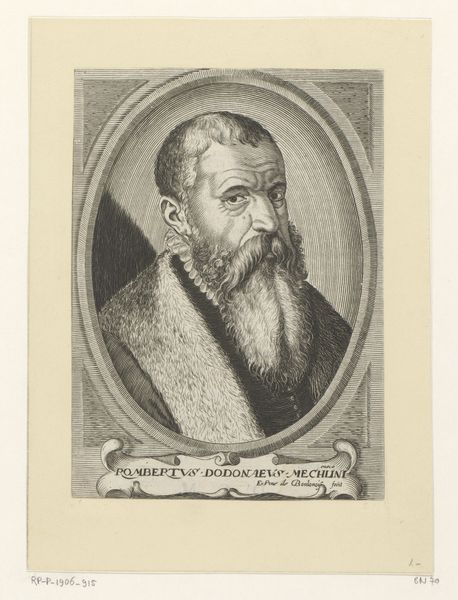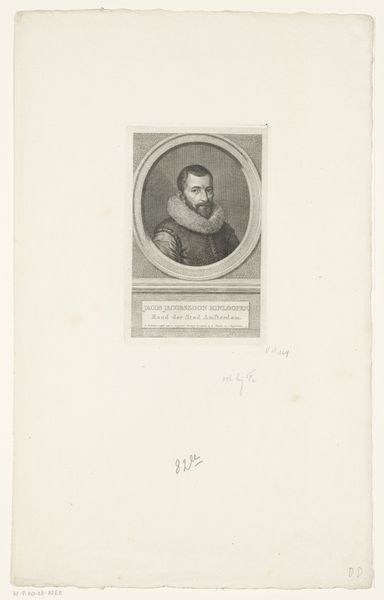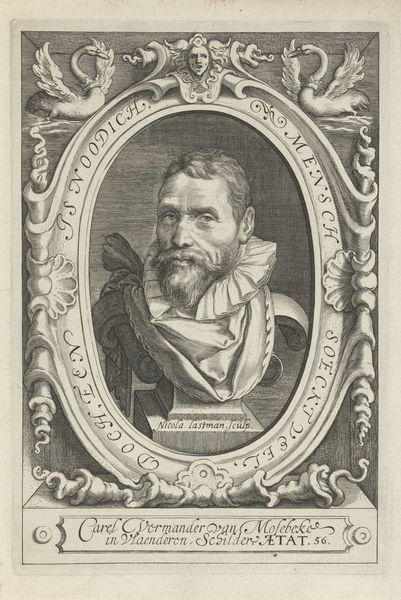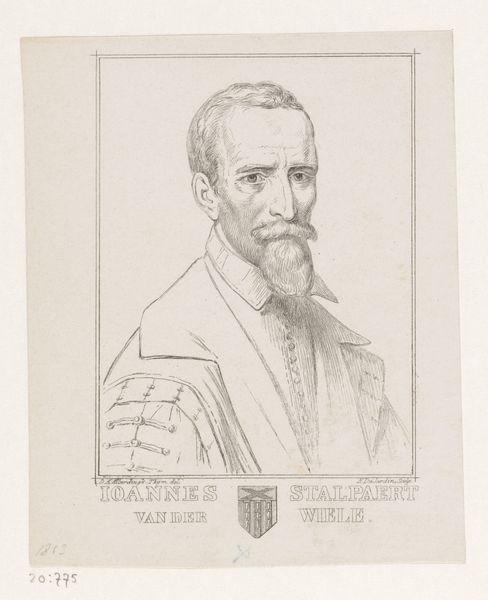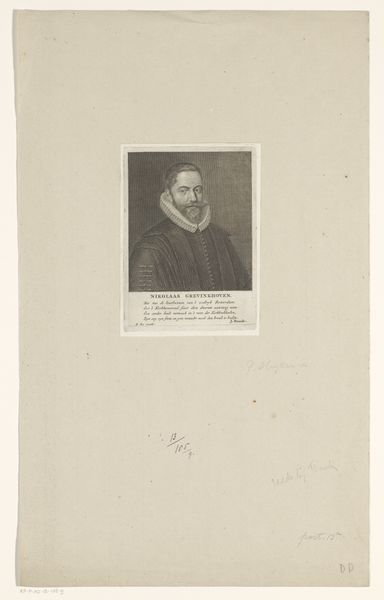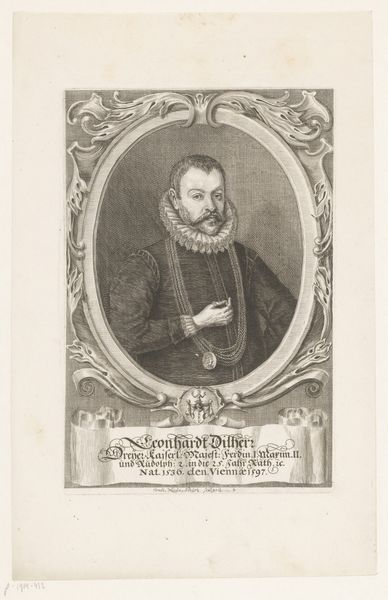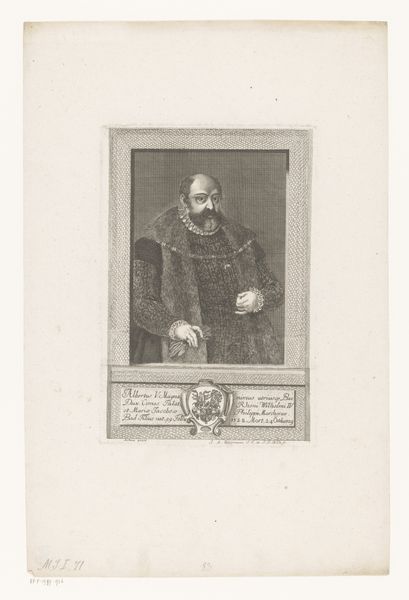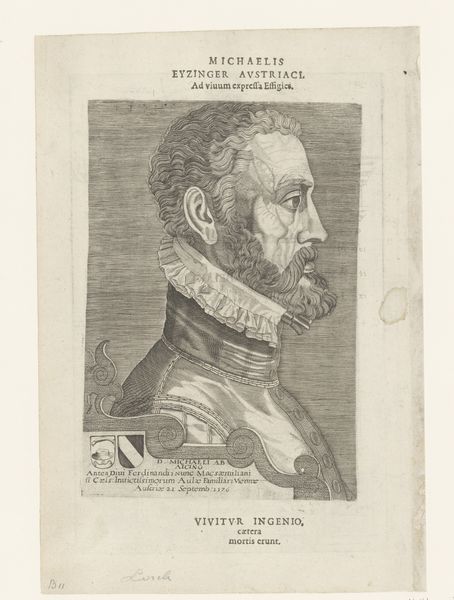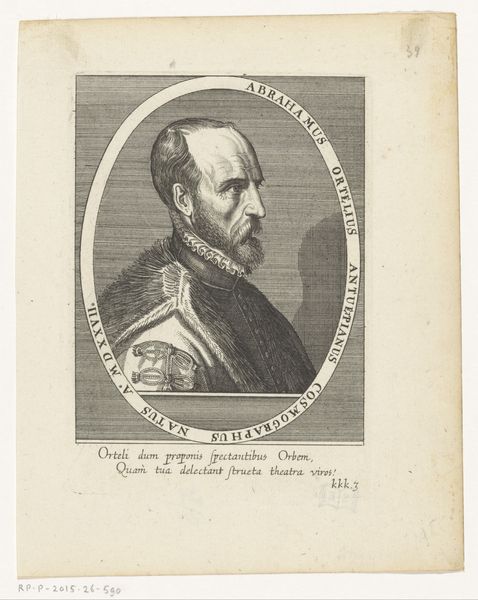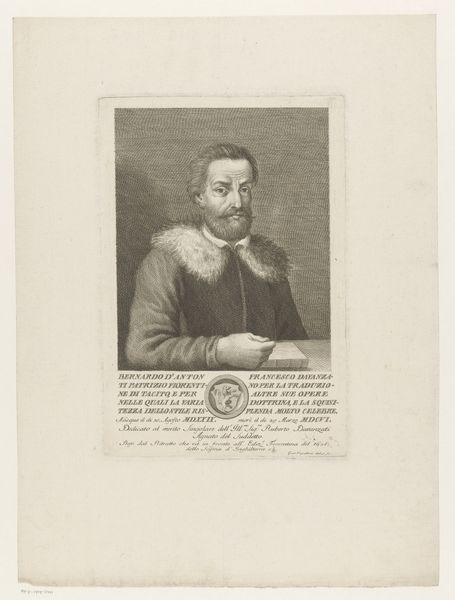
print, engraving
#
portrait
#
neoclacissism
# print
#
engraving
Dimensions: height 187 mm, width 206 mm
Copyright: Rijks Museum: Open Domain
Editor: This print, titled *Portret van een man, mogelijk kunstenaar Correggio*, dates from after 1775 and is attributed to Luigi Valperga. It's an engraving, a style that always strikes me as very formal and… almost severe. The subject’s expression certainly adds to that feeling. What stands out to you about this image? Curator: What intrigues me is the architectural framing. This neoclassical border isn't just decorative; it suggests an opening, a window into history, perhaps. The face becomes a symbolic mask, almost, hinting at layers of meaning beneath the surface. Note the meticulous detail in the lines. Do you think it's trying to revive classical virtue and intellect through the image of this man? Editor: Possibly! The title says it *might* be Correggio… maybe that's intentional, referencing that classical history and artistic skill? It's like they're trying to imbue this unknown man with that historical weight. Curator: Precisely. And look at the inscription. Doesn’t that suggest a dedication, possibly to royalty? The symbols woven into the crests below speak to lineage, duty, and the enduring power of inherited identity. These symbols were understood as visual languages – do you see how Valperga is trying to anchor his subject within a web of cultural memory and aristocratic continuity? Editor: That's a great point; I hadn't considered the crest as adding meaning to his personal identity. So, rather than a simple portrait, it's a statement about history and social standing using carefully chosen symbols. Curator: Exactly. Visual culture carries emotional, cultural, and psychological information, and it is fascinating how it resonates, shifts and alters over time. This piece makes me appreciate the coded language of art history a bit more! Editor: I agree! I learned a lot. Thanks for helping me see this in a completely different way.
Comments
No comments
Be the first to comment and join the conversation on the ultimate creative platform.
